Garmin Fenix 5 Plus Review
Garmin Fenix 5 Plus
One of the best multi-sport watches available
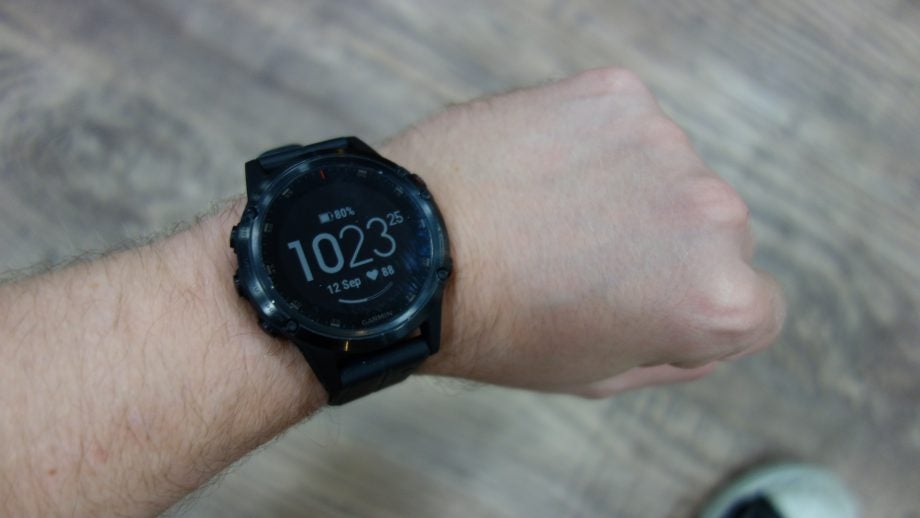
Verdict
Pros
- Super-rugged design
- Excellent location and distance tracking
- More sports options than you'll ever need
- Topo map support
Cons
- Doesn't support popular music streaming services
- Very expensive
Key Specifications
- Review Price: £750
- 1.2-inch, 240 x 240 pixels colour display
- Up to 12-day battery life
- GPS/GLONASS/Galileo
- 10-ATM waterproofing
- Multi-sport tracking
What is the Garmin Fenix 5 Plus?
The Fenix 5 Plus is Garmin’s attempt to create the ultimate fitness tracker. Featuring support for advanced Galileo location tech, more health tracking sensors than you can shake a stick at, local music playback and one of the toughest designs around, the Fenix 5 is an excellent device.
If you’re a serious runner, climber, triathlete or even an ultramarathon runner, you’ll struggle to get a better wrist accessory than the Garmin Fenix 5 Plus.
But with the most basic model costing a hefty £599, it’s seriously expensive. Unless you’re a near pro-level athlete, or a committed amateur, the Fenix 5 Plus is complete overkill.
Less serious athletes would be better off looking further down Garmin’s line to devices such as the Forerunner 645 Music, which is more than good enough for city runs and gym sessions. True newbies might do better with a basic tracker, such as the Fitbit Versa or Garmin’s lower-end Vivosport.
Related: Best fitness tracker
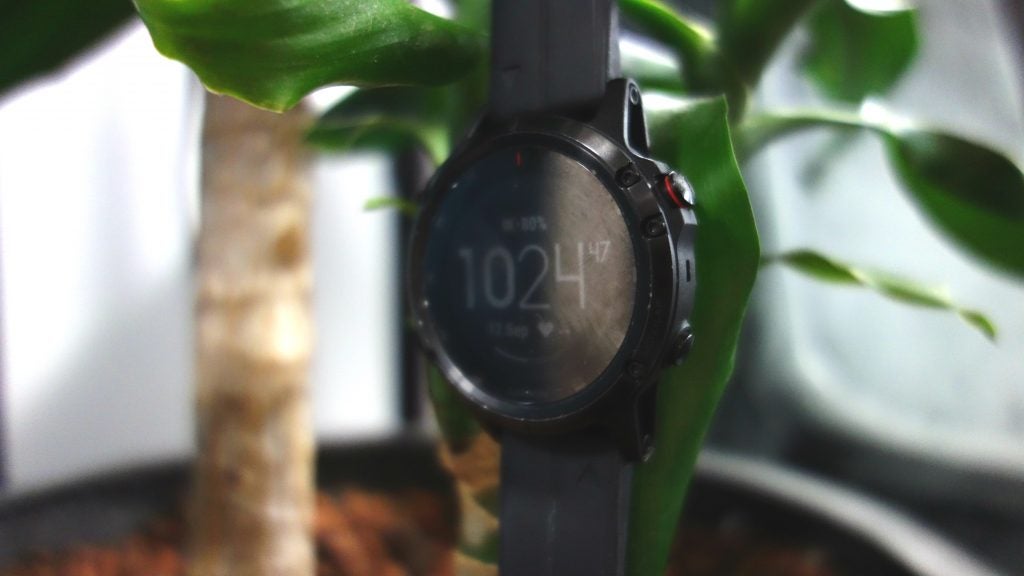
Garmin Fenix 5 Plus – Design
The Fenix 5 Plus is unashamedly built with durability in mind. Even by fitness tracker standards it’s chunky, measuring in at 15.8mm thick and weighing 76g. This bulk makes the Fenix 5 Plus pretty difficult to ignore, even with its sleek all-black colouring. If fashion is your primary concern, this isn’t the tracker for you.
Overall, the Fenix 5 Plus looks pretty identical to other Forerunner GPS trackers. It has a circular watch face, which is coated in either Sapphire or reinforced glass. It has a titanium metal bezel and a choice of silicon, metal and leather straps.
Around the sides you’ll find the same button setup as past Forerunners. On the left are up and down controls; on the right, start/stop and back buttons. The system is the only way to navigate the watch’s menus, since the 1.2-inch screen isn’t touch-enabled.
Garmin’s control system has always been a marmite factor for buyers; it can take some getting used to. The main menu is controlled using the left up and down buttons, which let you scroll through installed apps and features.
The Start menu brings up the sports tracking options. Each side is heavily customisable, so in theory you can set the apps and sports to track in any order you like. However, doing so with just the buttons can be time-consuming, and the out-of-box setup is fairly basic. This means serious athletes will have to spend time customising the UI.
Related: Best running watches
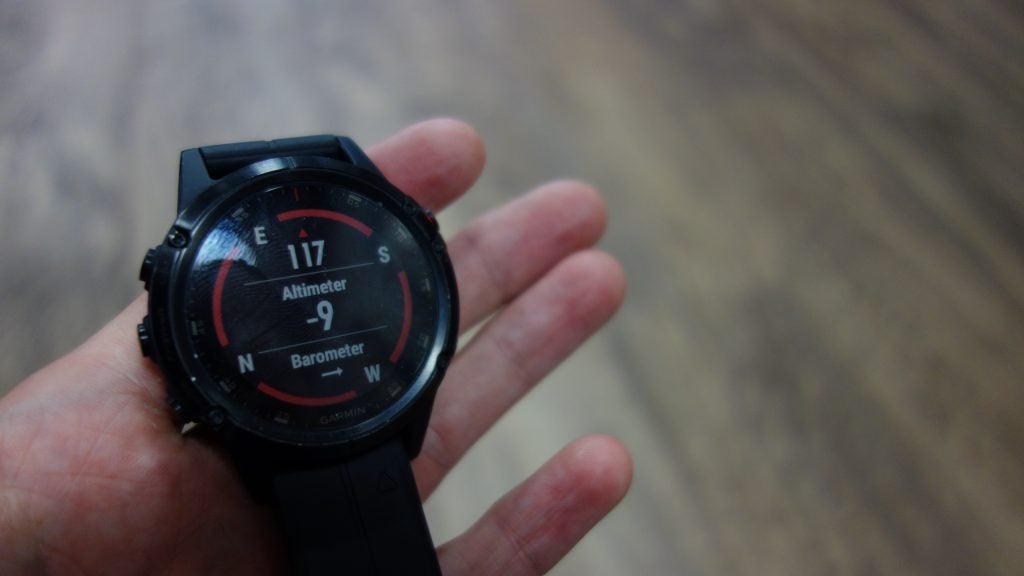
Thankfully, elsewhere the Fenix 5 Plus is fantastic. Build quality is excellent, and to date the device remains in pristine condition – despite putting it through some pretty brutal workouts. These have included taking the Fenix out for a mini-triathlon in the rain, to accidentally slamming it against a bolt on a climbing wall.
I haven’t had an opportunity to fully test the 10-ATM rating, but it easily survived basic lane swimming. The rating also means it should be fine for most shallow-water sports.
The screen is pretty decent, considering the watch’s fitness focus. The 240 x 240 resolution is more than sharp enough, and although nowhere near as vibrant as OLED watch screens, colours are fine and max brightness levels are high enough for it to remain legible in bright sunlight.
Under the hood, Garmin has taken advantage of every square millimetre of space, loading the Fenix 5 Plus with every sensor it could think of.
These include a heart rate monitor, barometric altimeter, compass, gyroscope, accelerometer and thermometer. But what makes it more interesting is the addition of Galileo support alongside the more standard GPS and GLONASS. Galileo is the EU satellite positioning network. It’s only in early access at the moment, but on paper it’s more accurate and nippier than regular GPS.
For music fans, the watch also has an insane 16GB of internal storage. This lets you manually load the watch with music, or local map files. The ability to listen to music during a workout without needing to bring a phone is as awesome as ever. But, as I’ve found with the Forerunner 645 Music, the lack of third-party streaming support is an issue.
In theory, Deezer will work at some point – but you won’t be able to play, let alone cache, music from Spotify. Unless you’re a golden-oldie who still owns the music, you won’t be able to take advantage of the local storage as a result.
The Fenix 5 Plus is only missing the pulse ox acclimation feature, which is currently limited to the more expensive Fenix 5X Plus tracker. This is likely to be a sticking point for serious hikers. The feature measures your blood oxygen saturation, which can fluctuate at high altitudes. The addition of topographic mapping partially makes up for this, however; and, otherwise, the Fenix 5 Plus is an excellent tracker.
Related: Best smartwatches
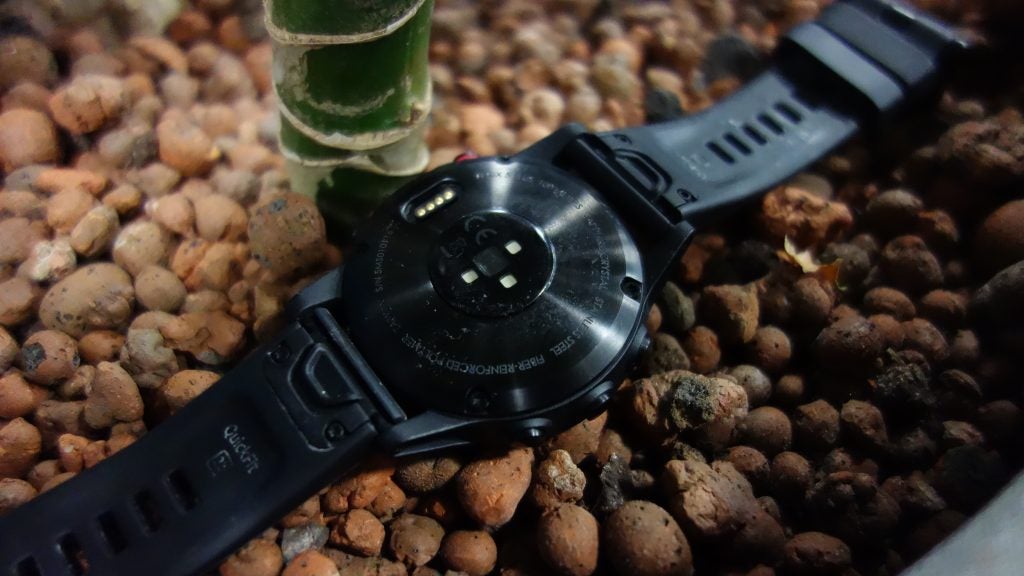
Garmin Fenix 5 Plus – Software and tracking
Out of the box the watch tracks pretty much every mainstream sport you could list. These include running and swimming to yachting and shooting. On paper, the lack of pre-installed boxing modes is annoying, but considering its placement and weight, I can’t see anyone seriously wanting to use the Fenix while working a bag.
I didn’t get a chance to test some of the more esoteric sports tracking, but having used it for three impromptu mini-triathlons, more 5km runs than I care to remember, plus my morning strength and exercise bike sessions, you can colour me impressed. Make no mistake, when it comes to tracking the Fenix 5 Plus is awesome.
Testing it against a Suunto Spartan, the Forerunner 645 Music and Vivosport, the Fenix 5 Plus’ GPS was by far the quickest. On the 30-metre walk from my front door to the park I run in, the Fenix was good to go before I’d crossed the road. Its rivals regularly left me pacing by the entrance for 1-2 minutes waiting for a GPS connection.
Distance tracking is top-notch. Running a track I know is roughly 5.3km, the Fenix never offered any serious distance deviations, producing equivalent data to the Spartan.
For swimming, the Fenix 5 Plus cements Garmin’s place as the industry leader. Once I set the lap length, the tracker offered fantastically accurate measurements of my stroke count, stroke type, and SWOLF – a measurement of how many times you’re doing the optimum number of strokes per length.
Related: Best Fitbit
The only downside is that, like most wearables, you’ll need to invest in an HRM strap if you want heart rate data while swimming. But this is true for any serious athlete, regardless of the sport they’re tracking, so it’s hardly a deal-breaker.
The Fenix 5 Plus has proprietary Garmin-made heart rate tracker built in. Results could be up to 5-10bps off what I got using a dedicated HRM strap. But, at the very least, they’re consistent.
You get the same set of aftercare readings as Garmin’s other trackers. These include key metrics such as VO2 max, performance condition, recommended recovery time and training load.
VO2 max is a useful training metric that measures how much oxygen you’re taking in and storing. Measured in millilitres of oxygen per kilogram, as a rule, the higher the figure the better your stamina.
Getting an accurate VO2 max measurement is an impossible task for a smartwatch; doing so requires a fairly horrendous workout that pushes you to your absolute limit while being plugged into some pretty expensive and specialist medical tech. Which is the reason the Fenix 5 is clear that it only offers users an estimate.
Related: Apple Watch 4
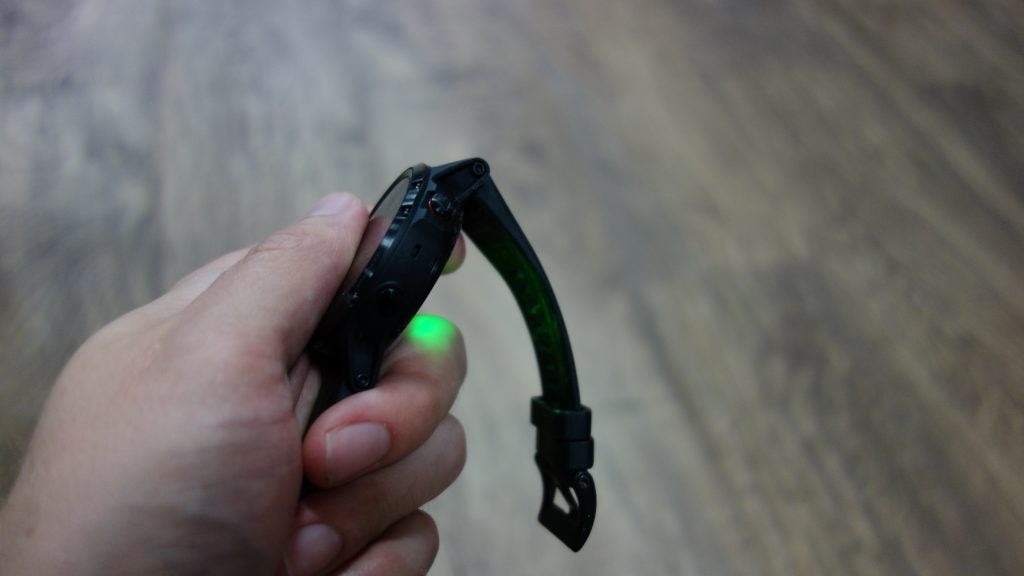
Thankfully, while I’m not convinced the actual figure is accurate, the VO2 max estimates are at least uniform, and within the realm of possibility. Unlike cheaper trackers claiming to offer VO2 max estimates, the Fenix 5 never once told me I was olympiad level. This means the figure is still useful as a vague metric of progress, if you’re working on cardio performance.
Garmin’s proprietary performance condition metric is a useful tool that uses historical performance data plus your current heart rate data to let you know how you’re performing mid-workout. The figure only comes into effect after 6-11 minutes of running/exercise, offering a basic plus or minus figure that lets you see how far off your baseline you are. The feature sounds basic, but it’s a simplification that’s easier to keep track of mid-run than minor changes in lap times and heart rate blips.
Recommended Recovery Time does what it says on the tin, using FirstBeat algorithms to recommend after every session the number of hours you should wait before working out again. In general, I found the recommended time was a little pessimistic, but it’s still a decent metric that helps avoid overdoing it while training.
Training Load rounds off the set of after-care services. It aims to give you a breakdown of how beneficial your workouts are. It uses workout and performance data gathered over the past seven days to tell you if you’re slacking, or overdoing it, using a colour-coded slider and overall training score. The feature is another one that helps you to gauge whether you’re working inefficiently and adjust your routine accordingly.
Related: Best running headphones
Garmin Fenix 5 Plus – Battery life
Battery life is stellar, even by fitness tracker standards. Garmin quotes the Fenix 5 Plus as offering 12 days’ battery life as a smartwatch, 18 hours with GPS, eight hours with GPS and music, and 42 hours in ‘UltraTrac’ mode – this puts location tracking to the fore at the expense of other processes.
With regular use I found the Fenix 5 Plus matched Garmin’s quoted figures. Using it to track my morning half-hour workout each day, plus three-to-four 5km lunch runs with music, I generally achieved a full week’s use before it required a charge.
The only downside is that, like nearly every fitness tracker, it uses a proprietary charging cable. This means you’ll have to remember to pack yet another cable when travelling – and have to shell out for a new one if you’re unlucky enough to lose it.
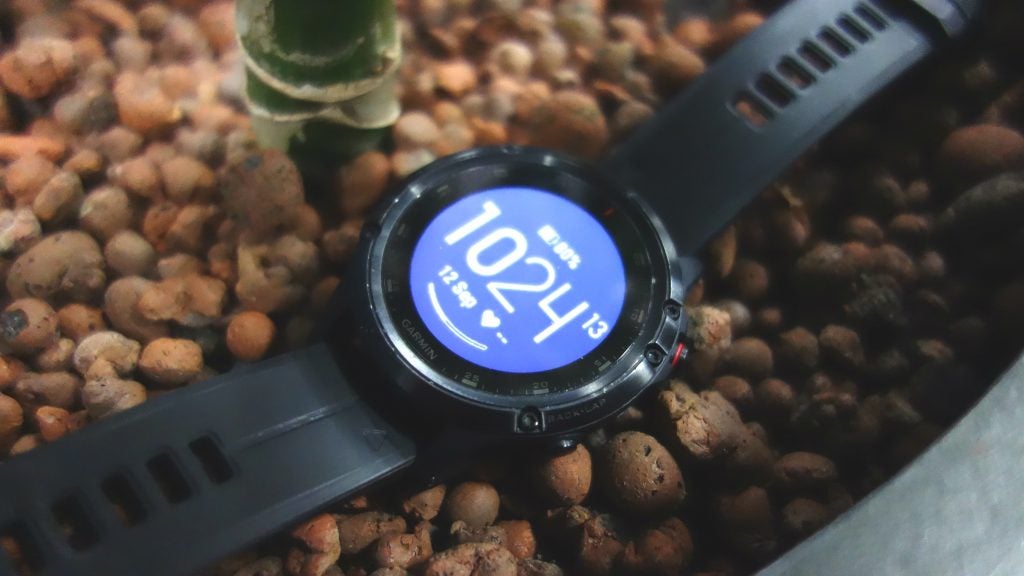
Why buy the Garmin Fenix 5 Plus?
If you’ve got cash to burn and want a no-compromise fitness tracker then the Garmin Fenix 5 Plus is a fantastic choice.
The watch offers some of the best location and distance tracking services I’ve seen on a fitness watch. This, coupled with more sports tracking options than can easily be counted, a near-indestructible design, and super-helpful coaching features, makes the Fenix 5 Plus one of the best fitness trackers available.
The only downsides are it’s super-high upfront cost, and the lack of support for popular music streaming services such as Spotify.
The pricing means that, unless you’re a super-serious athlete, the Fenix 5 Plus is complete overkill. Semi-serious athletes will be better off scaling down Garmin’s line, looking at the more affordable Forerunner series.
Casual users who just want to track their runs or gym sessions should check out Fitbit’s latest trackers or Garmin’s more affordable Vivo range.
Verdict
For serious athletes the Garmin Fenix 5 Plus will prove an invaluable fitness tracker. For everyone else, it’s overkill.


